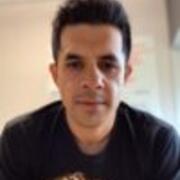Cell Biology
a) Cilia are hairlike organelles that project out from the cell membrane into extracellular space. Cilia are either sensory, that they sense the extracellular signals or motile, that they beat to create extracellular fluid flow. Virtually every human cell is ciliated, and therefore they are critical in many developmental and physiological processes. Despite 50 years of research, how a cell assembles a cilium is still an unanswered question. We use novel approaches to understand the mechanisms driving the construction of cilia. b) A cell is a highly organized entity with a dynamic regulation of its organelles. Cells appear to not only regulate the assembly and spatiotemporal positioning of centrioles but also their geometric parameters like the size and number. However, underlying molecular mechanisms are not well understood. My lab seeks to answer two central questions: 1) how cells count centrioles?; and 2) how cells spatiotemporally position centrioles? We use a unique model system, multiciliated cells (MCCs) of frog (Xenopus) embryonic epithelium, to answer these questions. c) We utilize frogs (Xenopus) to model human birth defects (BDs). We focus on BDs that represent ciliopathies, e.g., hydrocephalus, respiratory disorders, and congenital heart disease. The primary goal of the lab is to uncover the molecular mechanisms of these gene variants that can explain the patient's ciliopathy phenotype and bolster the evidence that these variants are disease-causing. Our research utilizes number of approaches including super-resolution imaging, CRSIPR-Cas9 mutagenesis, biomechanics, and electron microscopy.


